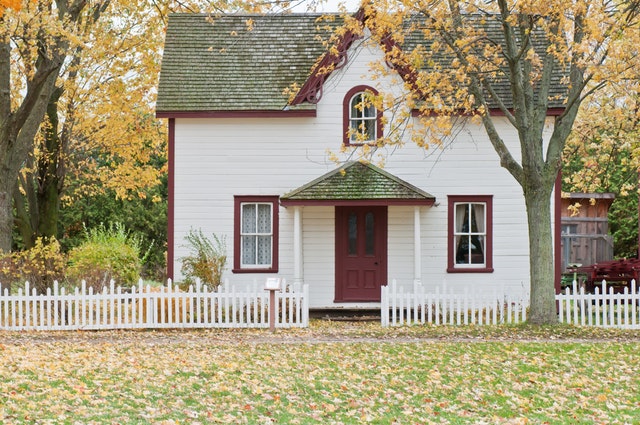Compare home loan rates to get the best rates possible for your home loans. There is a huge number of lenders in Australia. Comparing rates is one of the most critical parts of home loan shopping because it will eventually affect the amount you pay in the long run. However, the lower interest rate doesn’t always mean it is the best loan for you. There are other factors to consider such as the comparison rate, features, and fees.
A standard variable home loan at Bank A has an interest rate p.a. at 5.22% and Brand Y Lending at 5.58%. Bank A appears to be lower however application fee at $600 with $8 recurring monthly fee and Brand Y Lending is at $350 with $10 recurring monthly fee. Bank A offers 80% LVR and Brand Y Lending offer 90%. While Brand Y Lending looks higher, the application fee is at $350 compared to a $600 application fee from Bank A which is almost half the fee of Brand Y Lending. And even if Brand Y Lending has a higher interest rate it offers a lower application fee and a higher LVR.
Low interest rates can be catchy but always look beyond interest rates to determine the real deal.
Compare Home Loan Rates by Understanding Three Factors
1. Understand the Types of Interest Rates in the Home Loan Industry
The very first step in comparing home loan rates is to understand loan types in the home loan industry. If you have started research on home loan rates, you may have noticed mentions of various interest rates. These terms could be new to you or terms that you have come across but not really understand what it means. In order for you to choose the best interest rate applicable to you, you will need to have a good understanding of these various home rates.
Before going any further, it is important to know that the Reserve Bank of Australia controls the monetary policy thereby setting the cash interest rate or interest rate on overnight loans between banks. Below is a brief rundown of common interest rates you need to understand.
Variable Rate. An interest rate that fluctuates according to the changes in cash rate and other factors affecting the market. Note that cash rate does not always decrease but it does increase from time to time. When the cash rate decreases it can considerably cut down your payments by many points.
Fixed Rate. An interest rate that’s locked in a certain number of years, typically from one to five years. This protects you from possible interest rate hikes in the future. The downside of this type of interest rate is that you may not be able to take advantage of cash rate decreases within the lock-in period.
Partially Fixed Rate (Split Loan). This type allows you to pay a fixed interest rate on a portion of your loan where the remaining portion of the loan assumes variable rate. If you have a $300,000 loan and decided to go for a split loan, then you may have $200,000 assume a fixed rate while the remaining $100,000 will assume a variable rate.
Introductory Rate. This is a discounted interest rate provided usually in the first one or two years of the loan. This is specially offered to first time home buyers. After the introductory period is over, you will automatically revert to a standard variable loan.
2. Understand How Loan to Value Ratio can Impact Interest Rate
Your loan to value ratio can affect your interest rate. This means that if you are intending to borrow more than 80% of the total property value, you are considered a high-risk borrower and therefore lenders will impose a higher interest rate on your loan. The general rule is the higher your LVR, the greater is the risk to the lender, therefore the interest rate is also higher.
Note that some lenders impose a higher interest rate above 80% LVR. So it is essential to make the right computations to work on a fairly reasonable interest rate on your loan. To compute your loan to value ratio, divide the total loan amount by the asset value. So if your asset value is at $450,000 and the total loan amount is $360,000, then your LVR is at 80%.
3. Understand Comparison Rates
If you have visited various loan comparison websites already, you usually see comparison rates beside the interest rate. Comparison rates are a rate that allows you to work out the possible cost of a loan. It helps you compare loans from various lenders.
A comparison rate is computed based on a loan amount of $150,000 with a loan term of 25 years and may include other related fees. It is singled out into one percentage figure. This single percentage comparison can provide you an overview of the how the loan will look like. An even quicker scan can tell you if there are upfront fees and ongoing costs.
If the comparison rate is higher than the interest rate, it can indicate that there are other fees associated with the loan. If the comparison rate is very close to the comparison rate, this may mean that there are lesser fees associated with the loan.
Here is a table of comparison to show a quick scenario:
| Lender | Interest rate | Comparison rate | Fees & other charges |
| Lender 1 | 5% | 5.5% | .5% |
| Lender 2 | 5.25% | 5.35% | .1% |
At first glance, Lender 1 with an interest rate of 5% looks ideal. But if you look further, fees and charges are at .5% compared to Lender 2 who appears to have a higher interest rate but offers much lower fees and charges. Therefore, Lender 2 will cost much less than Lender 1 in this scenario.
While comparing interest rates is an important factor in determining the best home loan for you, lower interest rates don’t always mean the best loan. This means that there are other factors affecting the cost of the loan when all other points are factored in which includes features, other fees, and LVR. When all of these factors are considered, you can come up with the best loan that will suit your needs.






